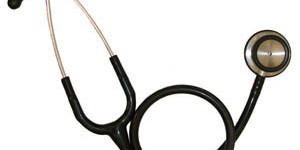First Grade Science Projects (137 results)
|
Select a resource
Coding Projects
Sort by
|
Have you ever seen a helicopter flying through the sky? It can be difficult to do a science project with a real helicopter, so in this project we will show you how to make a miniature paper helicopter called a whirlybird. Will your whirlybird be able to stay in the air as you add paper clips as weights? Try this project to find out!
Read more
Skyscrapers are impressive structures. What does it take to design a building so tall? Engineers use strong materials and innovative design to push the limits of gravity. They use special tables to simulate earthquakes and test models of their buildings. In this project, you will build your own earthquake table and see how tall you can make a tower out of LEGO® bricks. You can even measure how hard your earthquake table shakes using the accelerometer of your smartphone and a sensor app.
Read more
Vibrobots are fun little robots built from common household supplies, that are powered by vibrating motors. In this engineering project, you will design and built your own vibrobot. Would you rather have a robot that skitters quickly across a table or one that spins wildly in circles? How about a sumo-wrestling bot that can push others out of its way? The choice is up to you!
Read more
How much iron is in your cereal? In this experiment, you will devise a way of testing foods for supplemental iron additives. Then you will use your design to test different breakfast cereals to see how much iron they contain. Which brand of cereal will have the most iron in it?
Read more
On a windy day it is hard to keep your hat on! The power of the wind can even be strong enough to power large wind turbines to make electricity! In this experiment, find out how you can make your own instrument to measure the speed and power of the wind. How does it work?
Read more
Have you ever seen a magician float an object in the air? If so, you might think that levitation (making things float) is just a magic trick, but the truth is you can use an invisible physical force to levitate a magnet! Try this science project to find out how.
Read more
What do you do with your old wooden pencils when they get too short to hold? Don't throw them away; you can use them to make circuits! This project will show you how to use pencils to make resistors, an important part of many electrical circuits, and test how they affect the brightness of a lightbulb in a simple circuit.
Read more
What does the phrase, "Like a breath of fresh air," mean to you? This common phrase can have different meanings: calming, relaxing, invigorating, energizing or CLEAN! After all, you never hear anyone say, "Like a breath of dirty air," do you? Find out how clean the air is in this simple experiment.
Read more
Doctors use many complicated tools to check the health of patients. But you can make some medical tools at home—like a stethoscope! A doctor uses a stethoscope to listen to a patient's heart. In this science project, you will make three of your own homemade stethoscopes and figure out which stethoscope design works best and why.
Read more
How do astronomers collect stardust? They design and build satellites that are launched into space to collect particles on specially designed panels. Satellites can be sent to orbit around an object of interest: a planet, moon, or comet. In this experiment, you can build your own mini satellite and use it to collect some pretend stellar debris. If you simulate an asteroid impact, how much stellar dust will your satellite collect? Will placing your satellite at different "orbital" distances from…
Read more
|















